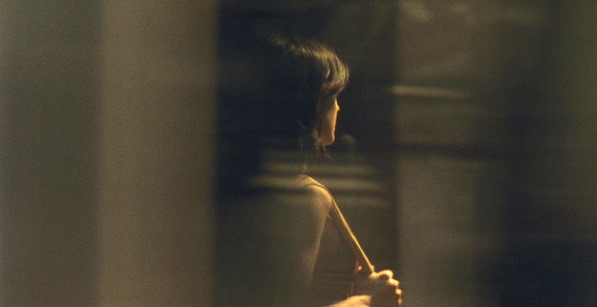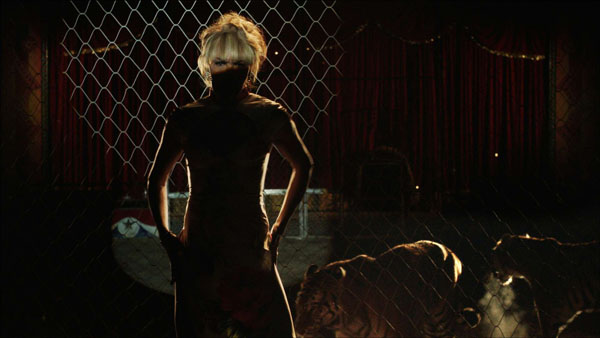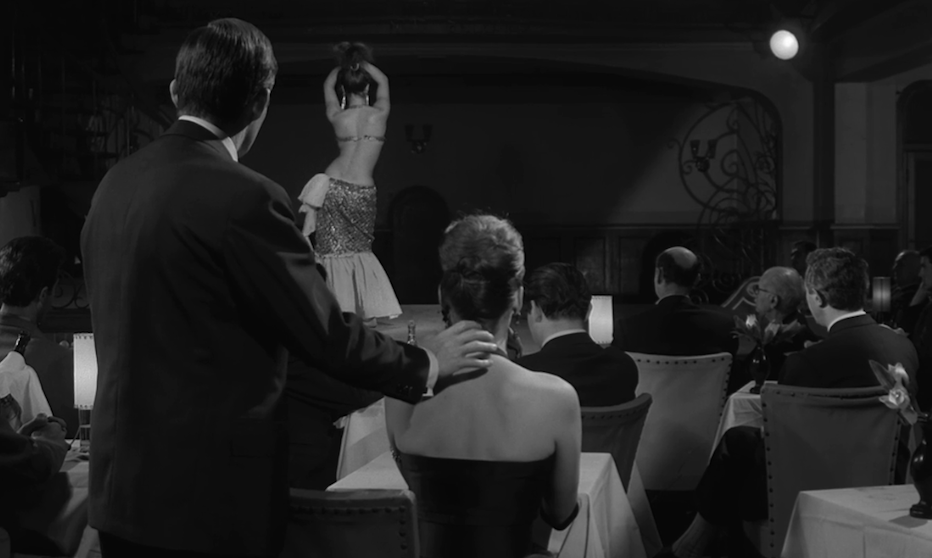[For more of our “Fifty Days, Fifty Lists,” see “Why Lists?” here on Keyframe.]
On getting haunted or hypnotized or both in the cities of cinema.
In the City of Sylvia (José Luis Guerin, 2007)
A city of pedestrian streets, bicycles and terrace cafés, haunted by the image of a woman (Pilar López de Ayala) that the male protagonist (Xavier Lafitte) met six years previously. A city haunted by the traces of memories that fill its corners. In this film—a sublime lesson in montage and one of the most startling studies of the cinematic frame—Strasbourg is a dance of feminine gestures and expressions seizing the man’s look. A city where wall inscriptions evoke the obsessions of Italian poets, where ghostly encounters and partings occur in public space, a city where fugitive bodies and faces become an ever-changing landscape where the hero projects his fantasies. When, from a conglomeration of forms and relections, a café window materialises the man’s desire, Guerin shows us how contemporary cinema can answer the heritage of films including Hitchcock’s Vertigo, Lang’s The Woman in the Window and Bresson’s Four Nights of a Dreamer.
The Last Time I Saw Macao (Joaõ Pedro Rodrigues & João Rui Guerra da Mata, 2012)
Inspired by their personal and cinematic memories, Portuguese directors João Pedro Rodrigues and João Rui Guerra da Mata create a mixture of film noir, minimalist-apocalyptic science fiction, and travelogue. The protagonist returns to the place where he grew up, Macao, to rediscover an elusive city, one he used to know but that now escapes him, and conspires against him—just as Vienna conspired against Harry Lime in Reed’s The Third Man. Fetish images of this former Portuguese colony—today immersed in rampant capitalism—spread everywhere. Strange rituals happen indoors, objects pass from hand to hand, and the protagonist wanders the streets, unable to orient himself or find any answer. Chris Marker’s reflections on the relation between image and voice-over become a major strategy here: the first-person narration strongly conditions our perception of this two-faced city, making any corner or restaurant façade seem sinister and suspicious.
Visions of a City (Larry Jordan, 1978)
As the title of this short film justly announces, San Francisco at the end of the 1950s is portrayed through shots where portions of the busy city and its inhabitants in motion are reflected in glass surfaces—hence as a vision. Jordan’s film has a strange, dual quality: it mixes a certain nostalgia for a lost time (emphasized by the use of sepia tint) with a sense of entrapment and surveillance. Everything seems to leave its imprint in the multiple, reflecting surfaces that arise along every street. Strange geometries, shop signs and displays, windows of public transportation in motion, people immersed in their daily routines like spectres—all confirm this ghostly, dreamy city portrait, where dynamic shadows emerge and transform themselves, where light provokes beautiful undulations and shifts, and where surprising objects register a little bit of time passing by.
L’immortelle (Alain Robbe-Grillet, 1963)
This film perfectly captures a foreigner’s perception of Istanbul: a city full of history, but also a secretive place where the traditional wooden houses hide eyes that spy through slits, and the narrow, charming streets become a dangerous labyrinth. The protagonist (Jacques Doniol-Valcroze) meets a woman (Françoise Brion). Together they visit mosques, palaces, and markets. When she suddenly disappears, he wanders the streets, trying to uncover the mystery. The strangeness of a city where everything seems staged and twisted is accentuated by the slow camera movements, by bodies that freeze in the space as if they were figures in a still picture, and by the superb sound design by Michel Fano. Waves that crash repeatedly against a dyke, the intermittent horns of boats crossing the canal, foreign voices that entangle the protagonist in a web of suspicion—these work as a hypnotic trigger, making us enter a dream world, maybe his dream-world…
Happy Together (Wong Kar-wai, 1997)
Caught in a destructive routine of dependency, power relations and jealousy, the male couple of Happy Together (Leslie Cheung and Tony Leung) decides to travel to Buenos Aires in order to give themselves a fresh start. But the city ends up registering the opposite: the slow disintegration of a painful relationship. Wong drives us from fast-speed shots of a hyper-modern, nocturnal city, full of cars and neon, to slow-motion dances in traditional tango cafés; from cobblestone streets flooded by the ephemeral joy of the summer sun, to restaurant kitchens that are the backdrop for mundane necessities. Framed by two visits to the Iguazú waterfalls—a symbolic landmark of this healing-love-sickness chronicle—Happy Together presents Buenos Aires as the capital of the end of love. And, before life can begin again, far away from this foreign city, sadness will be stored in a silent cassette and thrown in the waters, like a desperate message in a bottle.






